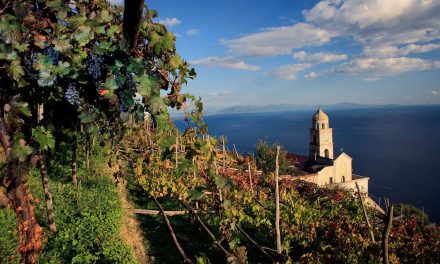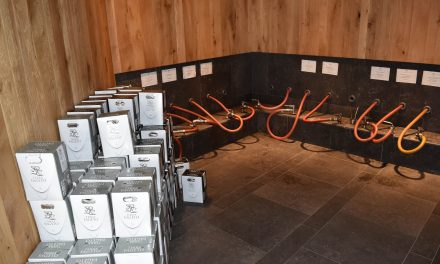I am sure you have all heard about cult wines. These are celebrated labels that repeatedly appear in wine related articles which we are told are in high demand and very expensive. They are mostly California Cabarnets, with labels such as Harlan Estate, Screaming Eagle, Araujo, Colgin Cellars etc. Penfolds Grange from Australia is also in a cult status. What exactly makes a “cult” wine?
If you look at a formal definition it sounds familiar enough. Here’s one from Wikipedia: “cult wines are those for which dedicated groups of committed enthusiasts will pay large sums of money.” They later go on to say, “cult wines are often seen as trophy wines to be collected or as investments to be held rather than consumed.” Really? Is a cult wine defined solely by its dollar value?
I started thinking about the subject because in our wine tasting group we have several labels around which, as I see it, we have built a “civil religion”. We seem to worship them. As with all religion it started some time in the distant past; no one knows when or how, and is now being passed on to new converts. I received my conversion back in 1996; a guest form Los Angeles who attended our last tasting three days ago received hers upon her first visit with us. She was an easy convert; one sip and she exclaimed “I love Bandol!” It was actually a bottle of low class but very good Bordeaux which, while tasting blind we all guessed as Domaine Tempier Bandol, the main label of our civil religion. We had to open her a bottle of real Bandol, to confirm that it is indeed worthy of her exclamation. We were all surprised when the former bottle got unveiled, but then we also were not.
After all, I think Bandol’s cult status in our group most likely began by its striking similarity in nose and palate to Bordeaux. There was a time, before the modern age (as defined by when I became a wine enthusiast), Dm. Tempier was cheap and unknown, and very good. It reminded the early deciphels of Bordeaux. It was a cheap version of the expensive, high class Bordeaux experience and that’s how they got hooked. Nowadays it is no longer cheap, but still a value compared to major 1855 Cru Classe labels.
For those of you who don’t know, Bandol is a seaside French town east of Marseilles, near the Italian border. The wine appelation there is part of the general Provence umbrella. The grape is primarily mouvedre, although winemakers there will mix the many other varietals that Provence and Languedoc producers use such as syrah, cinsault, picpoul etc. Domaine Tempier discovered and introduced to the U.S. by the Berkeley wine merchant Kermit Lynch is, in our opinion, the best example of Bandol. Its regular bottling is not all mouvedre, but its reserve or special vineyard labels are. After all these years of tasting it, I am still amazed that this grape, in its Provence version, delivers a Bordeaux-like experience. But discriminating palates know better. It tends to be somewhat riper and more fruit forward than Bordeaux, and although nearly as ageworthy, it can be consumed at any time, young or old, as opposed to great Bordeaux which needs to lay down for around 10 years minimum before consumption.
Another label that carries a cult status with us is a Chateauneuf du Pape called Vieux Telegraph. Also discovered by Kermit Lynch, this particular wine is now all over such magazines as Wine Spectator and I suspect has a bit of cult status with many others. Its unique feature that qualifies it for our deification is that unlike many other Ch. du Pape which are mainly Grenache and Syrah combinations, with 6 or 7 other grapes in the blend, Vieux Telegraph has a generous wallop of mouvedre in it, and thus, in essence it delivers a variation of that Provence mouvedre experience which lies in the foundation of our cult.
Based on our experience I don’t believe that a cult wine is mainly defined by its prohibitive price. I think first and foremost there needs to be a group of people behind the phenomenon. Single folks cannot have cults, which by definition are societal creations. The cult wine, like all religion, then gives the group a distinct identity, separating them from other groups. How many Northern California wine drinkers do you know who have Bandol at the top of their tasting list? Most are pursuing Napa Cabarnet, Pinot Noir or various expensive Chardonnnays. Certainly at its inception, the Bandol cult was definitely distinct from the rest of the world who had hardly heard of it. Like the strange concept of monotheism in a totally polytheistic world, the beginnings of major cults have to be in the fringe or eccentric. After evolution everyone takes it for granted that the concept is good or natural, forgetting that at one time its advocates were oddballs.
Our little secret, Bandol and Vieux Telegraph, appear ubiquitously in our special wine group parties. They are our wines of consecration. They also appear frequently in our blind tastings and we love the communal experience of identifying them and trying to guess which vintage or which vineyard they are. The whole process is a glue that binds us as a group, affirming our collective love not only for the cherished object, but for wine in general.
I submit to you that wines such as Harlan and Screaming Eagle started their life as such objects in a small group, or maybe a few groups, and that there was a time when they were truely appreciated for what they were. The difference between them and Bandol is that they broke out of their core groups, into crass wealthy materialists who derailed the cult status from its original course. Sounds a bit like Chrisitanity doesn’t it?
I am happy that our little cult objects, Bandol and Vieux Telegraph, while more expensive than in the past, have not broken into the hands and mouths of those that created what are commonly known as “cult wines”, denying us access to them by prohibitively high prices. But then it’s only wine! If they were to suffer such a fate, I am sure we would communally discover some other label to substitute as our object of worship.
Moris Senegor









